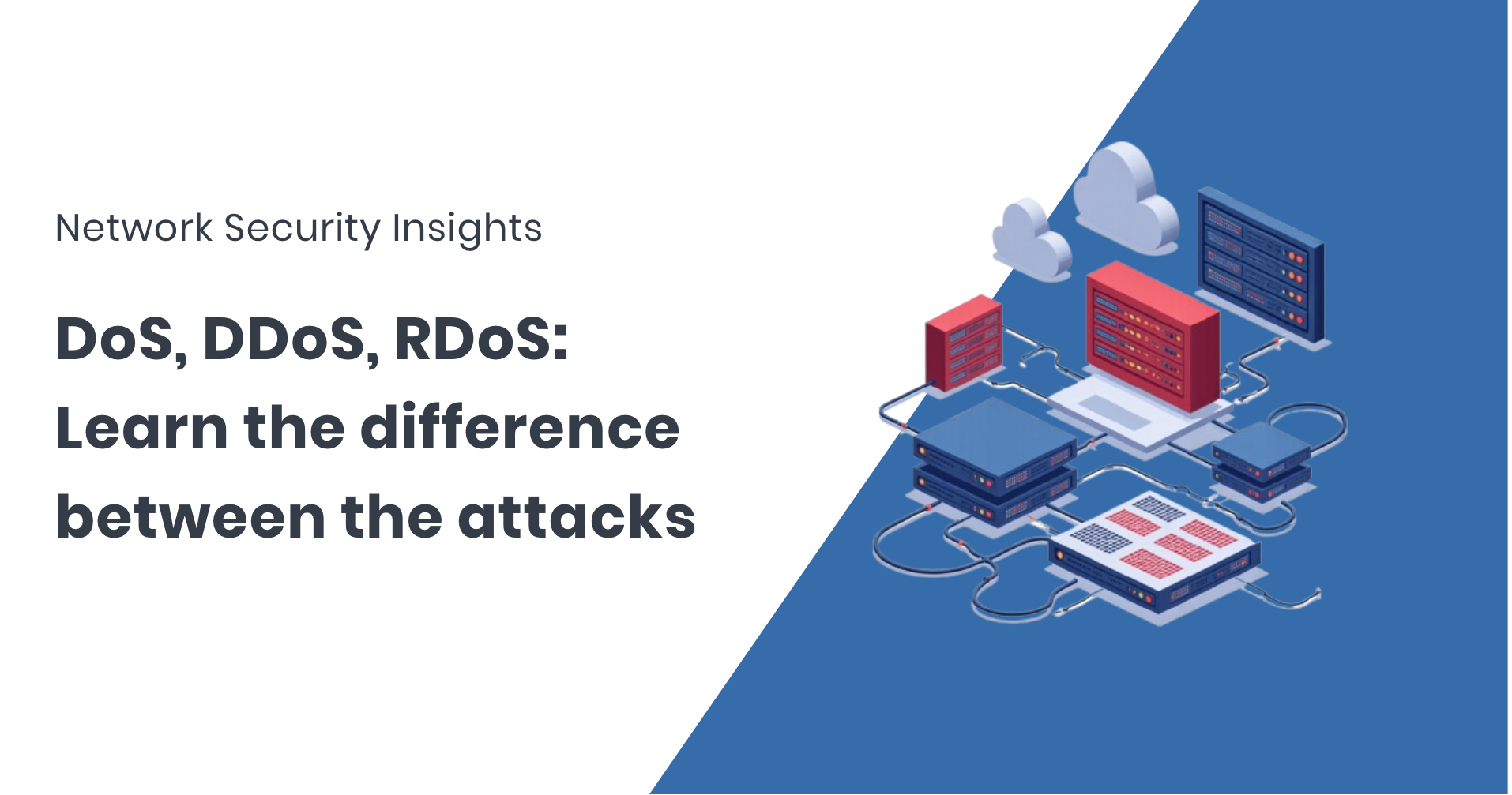
What’s the difference between DoS, DDoS, RDoS, and how to prevent these cyberattacks?
Not all cyberattacks are created equal. If you’ve ever heard terms like DoS, DDoS or RDoS and wondered what they mean, and why they keep showing up in the news, here’s a simple breakdown.
DoS: The digital jam-up
A Denial of Service (DoS) attack is like someone calling your landline over and over so no one else can reach you. It’s a one-device, one-target attack designed to flood a website or service with requests until it crashes. It can be annoying and disruptive, but relatively easy to spot and block.
Due to the simple nature of the attack, these days DoS is often not considered a hugely serious threat in the cybersecurity space. However, there have been cases of very specific DoS attacks, where the hacker been able to take an entire system down by crafting a single packet to exploit a very precise vulnerability, such as a broken protocol rule or a buffer overflow.
DDoS: DoS, but with backup
A Distributed Denial of Service (DDoS) attack takes that same idea and scales it up. Instead of one computer, attackers use thousands of computers, or an army of hijacked devices, (usually called a botnet). It’s the digital version of a traffic jam with no exit. Harder to trace, harder to stop, and often causes longer outages.
One of the earliest known denial-of-service attacks took place in 1996, when Panix — one of the oldest internet service providers in the world — was hit by a SYN flood. This type of attack overwhelmed its servers with half-open TCP connections, effectively knocking the service offline for several days. At the time, it was a wake-up call to the vulnerabilities of online infrastructure. Nearly three decades later, DoS and DDoS attacks have only grown more sophisticated and remain a serious threat.
RDoS: the threat before the storm
Ransom DoS (RDoS) adds blackmail into the mix. Technically, often identical to DDoS, the term RDoS refers to a situation where hackers send a ransom note demanding payment. Ransom is usually demanded in crypto, to prevent or stop a DDoS attack. Sometimes, the offenders start with a small test attack to find out the vulnerabilities of their target before turning up the heat. If the ransom isn’t paid, the attack continues and can keep going for days to an ends. In some cases, attackers pretend to be well-known cyber gangs to turn up the pressure.
What can you do to stop DoS DDoS and RDoS attacks?
These attacks are noisy, stressful, and unpredictable, however, they’re not unstoppable. The best defence is to prepare before it happens: know what parts of your system are vulnerable, have a response plan, and work with a provider who knows how to spot and stop these threats. Some of the defence strategies include blackholing the illegitimate traffic, using DDoS traffic scrubbing centres, or set up rules with BGP Flow Spec protocol in your network.
Because whether it’s noise from one attacker or thousands, the goal is the same, and so is your best shot at staying online.
About FastNetMon
FastNetMon is a leading solution for network security, offering advanced DDoS detection and mitigation. With real-time analytics and rapid response capabilities, FastNetMon helps organisations protect their infrastructure from evolving cyber threats.
For more information, visit https://fastnetmon.com